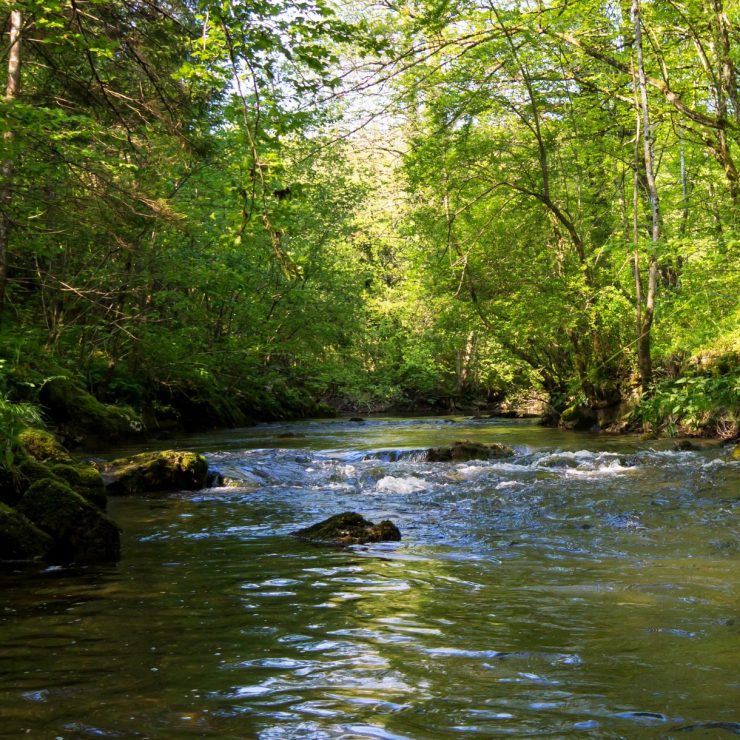By: Drew Altland, PE
For the precursor to the modern era discussed below, please see Neighborhood Stream POV Part 1 – On Historical Impacts from last week where we heard from our neighborhood stream on the long history of damage endured during the colonial era.
Transitioning from the turn of the 20th century to the period from the mid-1900s to present, extensive development within my watershed has added insult to injury. Many of my tributaries were piped underground and community storm drain outfalls blasted my streambed and banks. Roads continuously dissected my floodplain, creating upstream flow bottlenecks and accelerated flow through the road constrictions causing scour. Routine road and utility crossings often hold the streambed above my 1600s era level, so my streambed and floodplain surface are now perched up on the mud that had filled my valley bottom. As my streambed incised to and below the old mill dam, road and utility crossing levels, fish passage blockages became common. Watershed development compacted the soils and added much impervious cover, which greatly elevated the volume and intensity of flow crashing through my massive channel. These increased flows further exacerbated widespread channel erosion and impaired downstream water quality. Invasive, exotic, and introduced plants now dominate my floodplain such as reed canary grass, Japanese stilt grass, multi-flora rose, Japanese hops, and multiple wild vines that choke out the upland trees such as poplars and walnuts that are now common.
Today, I wish all those who inhabit my watershed could see me for who I truly was prior to this long history of mistreatment. I’m a shell of my former self and most of the ecological benefits I provided to past flora and fauna have long since disappeared. The damages I endured are far from unique to your neighborhood; sadly, they are ubiquitous throughout the Chesapeake Bay watershed and beyond.
The good news is that over the past few decades extensive research has revealed what I have endured, finally! Long awaited funding is now available to help restore my physical and ecological properties. And many people now understand that true restoration comes in the form of identifying all the damages I have endured to determine the full natural potential I still hold in today’s setting. Unearthing this natural potential is best performed through holistic restoration, not by ignoring or armoring my large channel to preserve the modern terrace filled with invasive and upland plants. I know my future can be significantly improved, as I have witnessed successful interventions to heal many of my past wounds.
All this said, some recent initiatives are extremely disconcerting. A handful of concerned citizens, special interest groups and political detractors have their sights set on discarding my long history of mistreatment to protect what is deemed to be natural today, which is alarming. Please act to help me break this long cycle of damage and misunderstanding. Support the restoration of your neighborhood streams and floodplains to unleash their full potential to improve our local environment, enhance wildlife habitat, manage flood risk, protect infrastructure, and to ultimately restore the health of the Chesapeake Bay.
